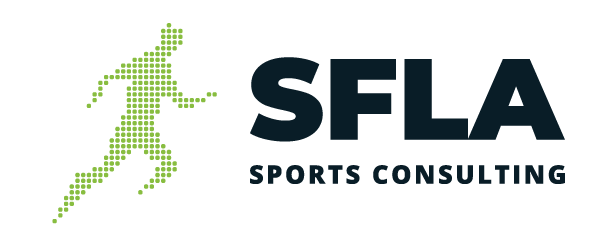By Andreas T. Themistocleous, Contributor
When discussing athletes’ salaries and overall personal revenues, it’s normal to think of professional sports in the USA where male athletes make millions in salaries and more millions in endorsements. The Jordans, the Lebrons, the Bradys of this world, do in fact make money that can financially secure their entire life plus their families’ lives. The Messis and Ronaldos of this world have annual commercial deals in place that far exceed their annual salaries. However, there are considerably more athletes on the other side of the revenue spectrum than those mentioned above.
Team sports, especially in the USA, like the NBA, NFL, MLS and European football pay athletes the most money in the industry, while golfers, tennis players, race car drivers can also attain financial sustainability through their sport careers. Still, the number of athletes in individual sports that make considerably less money than the team sports athletes, continue to be the majority of professional athletes in the world. Take for example the US Track and Field governing body, which in 2018 decided to pay $10,000 to any athlete that makes a World Championship or Olympic roster and pay top-performing athletes, who will win Olympic gold medals, as much as $100,000. Steph Curry, before tax, makes that money in a day; and let’s not even begin to discuss the expenses that athletes must undergo in terms of cost of living, training, having a professional coaching and support unit around them all the time and so on.
Notice the above reference to male athletes. It’s unfortunate, yet very real, that female athletes receive far less money than their male counterparts. In 2018, Neymar in France earned $43.8 million in salary alone. That figure is roughly the same as the 1,693 female players playing in the top tier in France, Germany, England, the U.S., Sweden, Australia and Mexico combined. The gender pay gap in sports, forces female athletes to go through their professional career in the uncertainty of financial viability, let alone sustainability. Unfair, unethical, unlawful, yet a harsh reality of today’s sport industry.
The issue arising from these brief facts and figures is that most athletes will go through their career without being able to secure their financial freedom and will probably not be able to support themselves and their families without getting another job, whether that be during or after their pro sport careers. It is a fact they have to face and accept, taking into account that athletes training for major events, such as the Olympics, or world championships, have to devote the entirety of their time and effort to practice and competition. What is more unfortunate is that for several athletes, their chance to shine and cash in, doesn’t come but only a few times every four-year cycle.
Based on precedent, there are a several ways to counter this reality. Athletes could have full or part time work to earn a decent living; they could utilize help from family and friends to fund their career or cut costs. They could turn to alternative ways, such as utilizing the support of the community or manage the little grants they can secure from sport governing bodies or other institutions to make ends meet. But let’s face it; athletes who are in pursuit of Olympic success, those athletes who are in very demanding sports, do not stand a chance of sporting success if they are not fully devoted to their sport and disciplined enough to make the extra effort and succeed.
There is no secret recipe in this situation, nor a guideline of a one-size-fits-all type of solution. Young athletes, especially those in individual and less popular sports should opt to pursue a dual career at the beginning. This means that they must get educational credentials, or career development qualifications, parallel to their sport development, on which they can fall back on at any time they need do. Additionally, athletes in individual sports need to strive to compete as much as possible and as often as possible, as competition prizes and participation fees can add up to a healthy income at the end of each year. Perhaps the most important step towards personal financial sustainability is to build a personal image.
Building a personal image means showcasing your sporting achievements, but also personal charismas and traits outside of sports. Social media is a good place to start, but be careful not to sell yourself short trying to become a talking point, rather than becoming a role model. Utilize your presence in your community to affect people’s lives. Offer your service to others, be a volunteer, become a public figure. Social responsibility is an important feature, if not mandatory, in the life of any professional athlete that helps towards this goal. If you can achieve to build a personal image, then you can take advantage of your image and get sponsorship agreements in place or create a steady income from appearance fees, which are the most common and at the same time lucrative revenue streams. You have to accept that not everyone will be a Tiger Woods or a Usain Bolt, in terms of commercial revenues generated, so again this must not be your only goal or your ultimate goal.
Utilize your experiences in sports, your work in the community and your image to create additional revenue. Being a motivational speaker at events, or becoming a mentor to others can be both satisfying and cash-generating. Moreover, look to diversify your revenue streams by considering the business aspect of sports, whether that be starting a service or a product that can generate income. It’s recommended that you stay well within your comfort zone in this situation, by associating this service or product with your own sport. Becoming a star feature of a e-sports game is a good way to utilize your image rights. Starting your own annual tournament for youth in your sport is also a good idea. Why not create a special product that is used in your sport, which will be endorsed by you and carry your name?
At the same time, you should make a conscious effort to become financially literate and to recognize the importance of other key financial ingredients, such as investment opportunities, creating a savings fund, or simply managing your assets in the best possible way. Look to treat your image rights and your tax obligations in the best possible way, by utilizing expert advice, as part of a greater financial plan that you should have from an early stage in your career.
Finally, if you really want things to change, if you want to make a difference for yourself and for others, if you want the next generation to be better off, then you have no other choice but to challenge the status quo, in terms of the money available to athletes in individual sports and the gender pay gap that is affecting the lives of athletes today.
————————————————————————————————————————-
Andreas T. Themistocleous (BSc, MA, MBA) is a native of Famagusta, Cyprus. He is a former basketball player, a NCAA Division I student-athlete and now a sports management/business professional. He has served in the sport industry from several positions, most notably in club football management, as a Board member of sport federations and as lecturer in academia. He is currently in the sports services industry. To connect and network with Andreas, you may find him on Twitter and LinkedIn.
—————————————————————————————————————————

